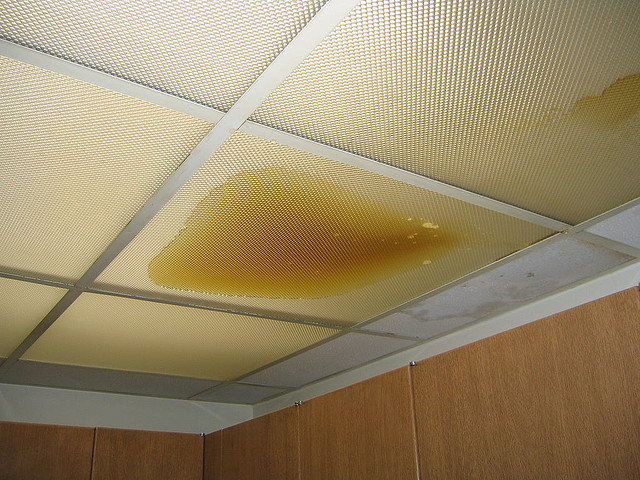The author is making a number of good points related to Locating water leaks in general in the content below.

Early detection of leaking water lines can mitigate a potential disaster. Some little water leakages might not be visible.
1. Analyze the Water Meter
Examining it is a guaranteed way that helps you uncover leaks. If it relocates, that suggests a fast-moving leak. This indicates you may have a slow-moving leak that could even be below ground.
2. Inspect Water Consumption
Analyze your water expenses and also track your water usage. As the one paying it, you should observe if there are any kind of disparities. If you spot sudden changes, in spite of your usage coinciding, it suggests that you have leakages in your plumbing system. Bear in mind, your water expense should drop under the same variety every month. A sudden spike in your costs shows a fast-moving leakage.
A consistent rise every month, even with the exact same behaviors, reveals you have a slow leakage that's additionally slowly escalating. Call a plumber to thoroughly inspect your residential or commercial property, specifically if you really feel a warm area on your floor with piping beneath.
3. Do a Food Coloring Examination
When it comes to water consumption, 30% comes from toilets. If the color somehow infiltrates your bowl during that time without flushing, there's a leak between the tank as well as bowl.
4. Asses Exterior Lines
Don't forget to examine your exterior water lines also. Examination faucets by connecting a garden hose. Ought to water seep out of the link, you have a loose rubber gasket. Change this as well as make sure all links are limited. If you have actually got a lawn sprinkler, it will assist get it skillfully took a look at as well as preserved every year. One tiny leakage can throw away lots of water as well as spike your water bill.
5. Check and Analyze the Situation
Home owners must make it a practice to check under the sink counters and also even inside cabinets for any kind of bad odor or mold development. These 2 red flags show a leak so prompt focus is needed. Doing regular assessments, even bi-annually, can conserve you from a major trouble.
If you understand your home is already old, maintain a careful eye on your heaters, tubes, pipes and so on. Check for discolorations as well as damaging as the majority of home appliances and pipes have a life expectancy. They will certainly additionally naturally weaken because of tear and also use. If you suspect dripping water lines in your plumbing system, don't wait for it to escalate. Call a professional plumber as soon as possible so you do not wind up with a terrible mess in your home.
Early discovery of leaking water lines can mitigate a potential calamity. Some small water leaks may not be noticeable. Inspecting it is a guaranteed method that helps you find leaks. One little leak can squander heaps of water and also spike your water expense.
If you presume dripping water lines in your plumbing system, do not wait for it to rise.
How to Know If Your Home Has a Hidden Leak
Water Meter Reveals Inexplicable Water Usage
If you’d like to test whether or not there’s a leak somewhere in your home, you can do this using your water meter. Here is how to conduct the test:
Don’t use any water in your home for at least 30 minutes; this also means not turning on faucets or water-using appliances.
Go outside, and check your water meter for activity.
If your water meter shows that there was activity, even though no one was using any water, this proves that there is a leak in your home.
Visible Mold or Mildew Growth
Leaks behind walls create moist, dark environments that allow mold and mildew to grow and thrive. Eventually, you might see mold growth forming on the wall closest to a hidden leak.
If mold is growing in an area that receives a high amount of moisture, such as a bathroom, it may simply be an indication that better ventilation is needed. However, if you see mold growth on a wall or the ceiling in an area where you would not expect, you probably have a hidden leak.
Musty, Mildew Odor
Sometimes you might not be able to see the mold or mildew that is growing as a result of a leak. However, the smell can give the problem away just as easily. If you catch a whiff of something musty, there’s a good chance that old water is collecting somewhere in your home that you can’t see.
Stained/Warped Walls, Ceilings, or Floors
When your home soaks up water, a variety of red flags can become visible, including ceiling stains, bubbling drywall, warped walls, and sagging floors. While these issues can be caused by excess humidity, they can also be signs that a pipe or plumbing connection has started leaking behind your walls.
Inexplicably High Water Bill
After a while, you get a general sense for what your water bill should be. If you own a pool or sprinkler system, your bill will tend to be higher during summer. However, if you receive a water bill that seems especially high, and you can’t figure out what caused it, then you may have a hidden leak somewhere that’s increasing your bill.
https://www.plumbingjoint.com/blog/2019/july/how-to-know-if-your-home-has-a-hidden-leak/

Do you appreciate more info about Detecting hidden plumbing leaks? Try leaving a short review further down. We would be interested to see your opinion about this write-up. Hoping that you visit us again later on. Sharing is good. Who knows, you could be doing someone a favor. Thanks a lot for going through it.
Comments on “6 Ways to Find Concealed Water Leaks in Your House”